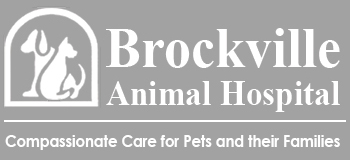Library
-
Deoxyribonucleic acid (DNA) is a long molecule that contains an animal’s entire genetic code. DNA is primarily located within the nucleus of each cell. In the nucleus, enzymes transcribe the DNA bases into a substance called RNA (ribonucleic acid), which serves as a messenger, taking the DNA message out into the cytoplasm of the cell where the RNA is translated into proteins. These proteins are responsible for a number of functions in the cell and throughout the body, primarily by acting as enzymes that regulate various cell reactions. DNA tests allow us to examine an animal’s DNA in order to see whether they carry certain genetic diseases. DNA testing can also be used to determine the ancestry of an animal.
-
This is a lively dog with a playful personality that demands to be with people and in the thick of things—and isn't above a bit of high-energy mischief.
-
Shepherds are intelligent and can learn almost any task. They have big hearts and often attempt to perform a request even if it's beyond their physical ability.
-
Easy care in the grooming department, they are high maintenance mentally, demanding a lot of attention and daily play or work time. They are not fussy as to which, as long as it involves exercise and their favorite person.
-
The German Wirehaired Pointer is an intelligent, eager-to-please breed. Like most sporting dogs, he needs outlets for his considerable energy. He has a mind of his own and can be quite a clown.
-
The Giant Schnauzer is not the most affectionate guy on the block; he won't cuddle up to you on the couch as readily as other dogs do. Despite such reserve, he nevertheless becomes deeply and strongly attached to his people, and can be fiercely protective of those he loves and their property.
-
Gingival hyperplasia is the abnormal growth of excessive gum tissue. The gums may appear reddened or inflamed and may become so enlarged that it is difficult to visualize the teeth. In some cases, gingival hyperplasia may be localized to specific areas and its appearance may mimic the appearance of a mass or tumor. Gingival hyperplasia is most commonly treated with the surgical removal of the excessive proliferative tissue, referred to as gingivoplasty. Although it results in a significant improvement in clinical signs, gingivoplasty does not typically cure the condition.
-
The easiest way to give your cat liquid medication is to mix it in with some canned food. In some cases, this is not possible, and you will have to administer the medication directly into the cat's mouth using a syringe. Before starting, make sure you prepare the syringe with the correct amount of medication. If the medication was refrigerated, you may want to warm it up by holding the syringe tightly in your hand for a minute or two. It may be helpful to have someone assist you the first few times you administer the medication. Try wrapping your cat in a blanket or towel with only its head exposed. Detailed directions for administering the medication are provided in this handout. Make sure you give your cat plenty of praise throughout the procedure and offer a special treat after giving the medication.
-
The easiest way to give your dog liquid medication is to mix it in with some canned food. In some cases, this is not possible, and you will have to administer the medication directly into your dog's mouth using a syringe. Before starting, make sure you prepare the syringe with the correct amount of medication. If the medication was refrigerated, you may want to warm it up by holding the syringe tightly in your hand for a minute or two. It may be helpful to have someone assist you the first few times you administer the medication. Detailed directions for administering the medication are provided in this handout. Be sure to offer your dog lots of praise and offer a treat or extra playtime after giving the medication.
-
Giving pills to cats can be a challenge, even for the most experienced veterinarian! The easiest way to give your cat a pill is to hide the pill in food. Some cats will always find the pill and spit it out, so you may need to administer it directly into your cat's mouth. This handout provides a step-by-step guide to do this, along with some other options if it is still too difficult.

